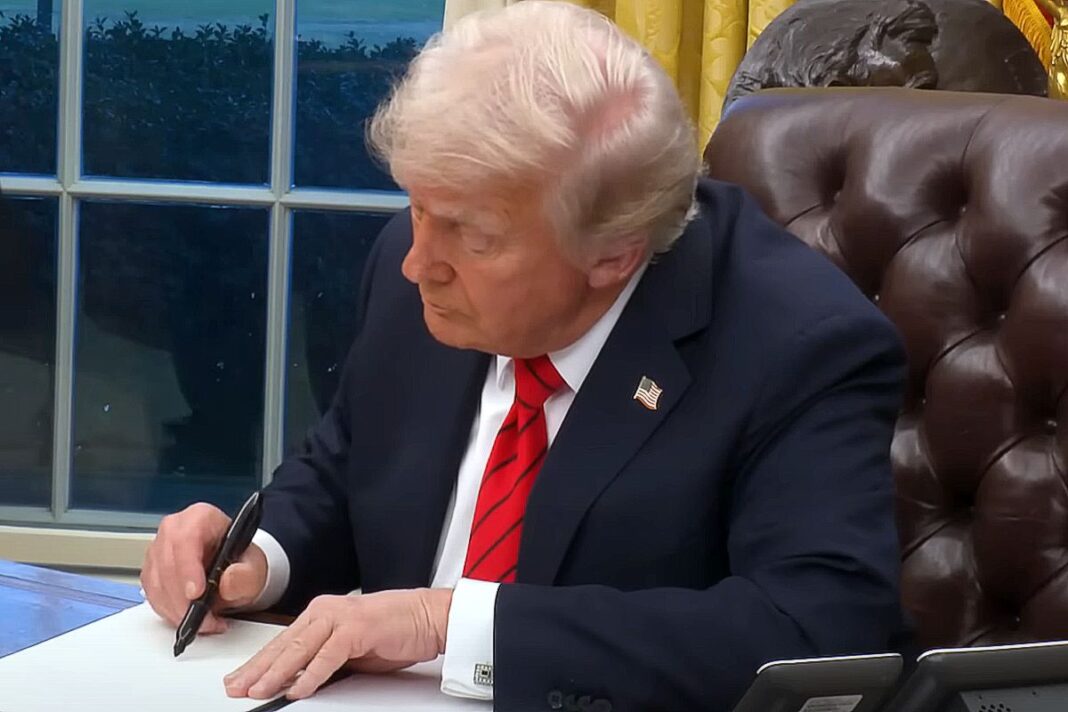The president’s order states that cyber sanctions ‘do not apply to election-related activities.’
President Donald Trump signed an executive order on Friday that aimed at amending parts of cybersecurity-related directives from the Biden and Obama administrations, which he deemed problematic.
Trump signed several executive orders on Friday, including directives aimed at strengthening American drone capabilities and advancing related technology.
“Cybersecurity is too important to be reduced to a mere political football,” the White House stated in a fact sheet outlining the initiatives of Trump’s order. “Adversaries routinely threaten our critical infrastructure, personal devices, and the fabrics of our digital lives.”
The order accused the Biden administration of attempting “to sneak problematic and distracting issues into cybersecurity policy” just days before leaving office in January, referring to an order former President Joe Biden signed on Jan. 16 to place security requirements on software used by government agencies and contractors.
According to the fact sheet, Biden’s order led to “unproven and burdensome” software accounting processes that prioritized “compliance checklists over genuine security investments.”
Trump eliminated parts of that order and directed the secretary of commerce to form a consortium with industry by August to develop guidance for implementing secure software development.
His order also removed a mandate requiring government agencies to issue digital IDs for illegal immigrants, which the administration said would have “facilitated entitlement fraud and other abuse.”
Trump also took aim at an order signed by former President Barack Obama in April 2015, narrowing the scope of cyber sanctions from applying to “any person” involved in hacking activities to specifically targeting “foreign malicious actors.”
His order states that cyber sanctions “do not apply to election-related activities,” as the administration seeks to prevent their misuse against domestic political opponents.
In addition, Trump’s order called for federal action on border gateway security to prevent “hijacking of network interconnections” and on post-quantum cryptography to secure against threats “that may leverage next generation compute architectures.”
The order also states that it will refocus artificial intelligence (AI) cybersecurity efforts towards “identifying and managing vulnerabilities, rather than censorship,” and implement technical measures to ensure that “Americans can know that their personal and home devices meet basic security engineering principles.”








